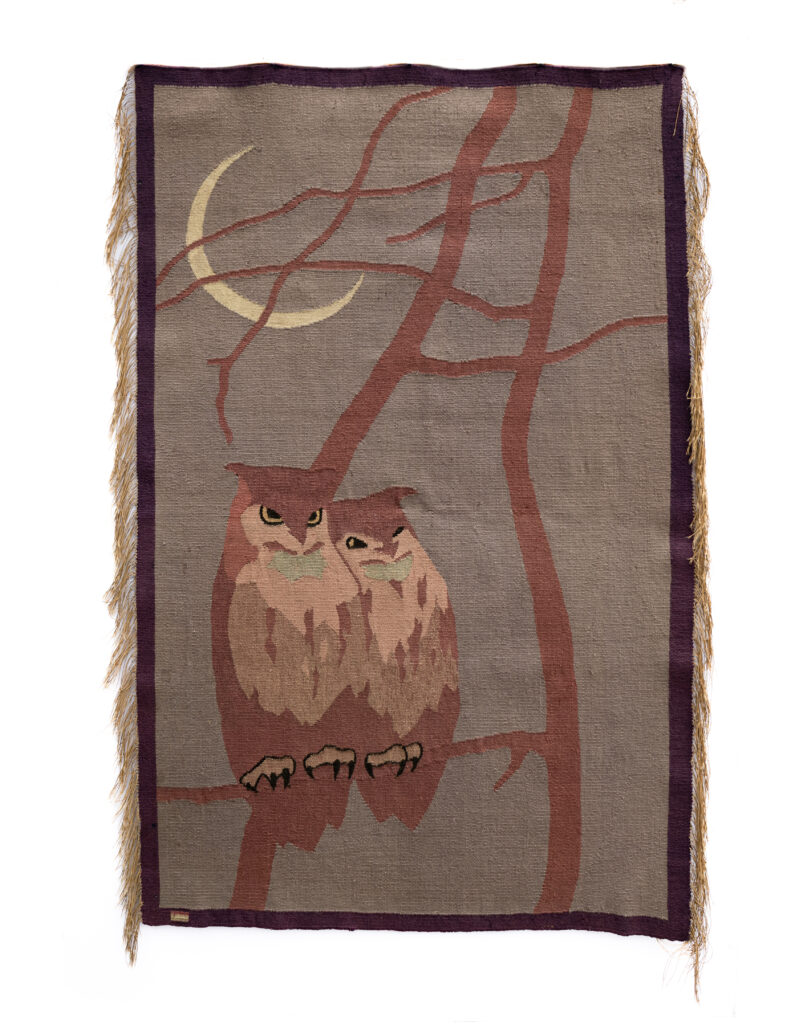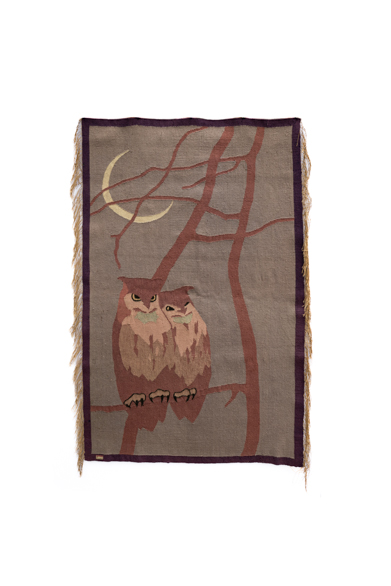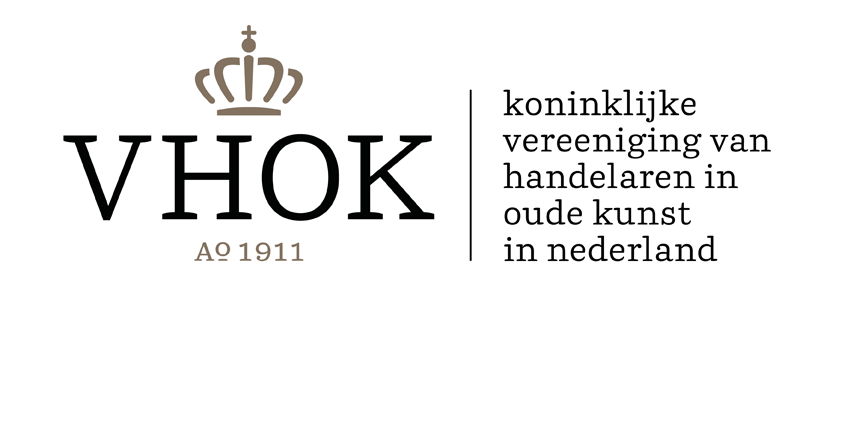Otto Ubbelohde – Eulenpaar, an Icon of German Jugendstil
This rare wall tapestry composition, designed by Otto Ubbelohde, depicts two stylized owls perched on a branch against a nocturnal background with a moon. The symmetrical composition, flowing lines, and subtle gradations of ochre, brown, and indigo reflect the influence of Jugendstil and the symbolist visual language of around 1900. The owl, a symbol of wisdom and silence, was a beloved motif in the decorative arts of this period and was rendered by Ubbelohde with exceptional sensitivity.
The design was executed by the Kunstwebschule Scherrebek, a leading weaving school that operated between 1896 and 1905 under the direction of Johannes Larsen and with the support of Justus Brinckmann of the Museum für Kunst und Gewerbe Hamburg. The institution collaborated with prominent artists such as Otto Eckmann, Heinrich Vogeler, and Hans Christiansen, resulting in the celebrated Scherrebeker Bildteppiche—tapestries that united art, craftsmanship, and national identity.
Eulenpaar is among Ubbelohde’s most renowned designs within this series. According to literature, approximately 40 examples of this model are known, each handwoven with slight variations in color and detail. One example is held in the collection of the Museum für Kunst und Gewerbe Hamburg (inv. no. 1901.65) and was discussed by Dorothee Bieske (2003) in her monograph on the Scherrebek tapestries.
The Eulenpaar tapestry embodies the fusion of art and craft that defines the German Jugendstil and stands as an outstanding example of Ubbelohde’s ability to harmoniously unite symbolism, decoration, and nature-inspired motifs.
About Otto Ubbelohde
Otto Ubbelohde was born on January 5, 1867, in Marburg an der Lahn and studied at the art academies of Weimar and Munich. After years of study and travel in southern Germany and Worpswede, he returned to his native region in 1900. In the open meadows of the Lahn near Goßfelden, he built, according to his own design and in collaboration with local craftsmen, a studio house clearly influenced by the English country house style. He expanded the building in 1905 and 1914 and lived there with his wife Hanna until his early death in 1922.
Ubbelohde gained wide recognition for his illustrations of the Brothers Grimm fairy tales (1906–1909), for which he created around 450 drawings. His imagery is deeply rooted in the Hessian landscape, featuring local castles, villages, and forests as backdrops. In addition to his illustrations, he painted landscapes and portraits and designed wall tapestries, including the renowned Eulenpaar (circa 1898–1900), produced by the Kunstwebschule Scherrebek—a highlight of German Jugendstil textile art.
His work is characterized by a harmonious synthesis of nature, symbolism, and decorative design, fully embodying the spirit of Jugendstil. In 1917 he was awarded the honorary title of Professor by the University of Marburg, and in 1918 he received an honorary doctorate from the University of Gießen.
After his death, the family donated his home and artistic estate to the Otto Ubbelohde Foundation in 1991. The building was carefully restored and opened as a museum in 1999. The Otto Ubbelohde House in Goßfelden now hosts rotating exhibitions that present his diverse oeuvre and stands as an important monument of German Jugendstil heritage.
Price: This item has been sold.
Interested in a similar item? Please click here to send us a message using the contact form.



